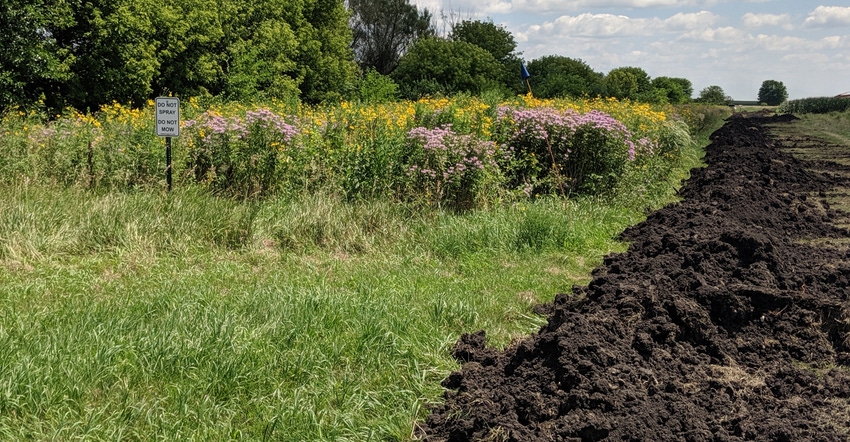November 7, 2019

Farmers and landowners who want to increase pollinator habitat while improving water quality should consider the benefits of saturated riparian buffers enhanced with native wildflowers.
Establishing pollinator habitat within riparian zones, where the agricultural value is lower and where the conservation and wildlife benefits are likely high, can be a win-win.
"Landowners looking for the combined benefits of native habitat and water quality can capture both by establishing pollinator-friendly species on top of saturated buffers," says Dana Schweitzer, program coordinator with the Iowa Monarch Conservation Consortium at Iowa State University.
As part of a four-year field demonstration, Schweitzer; Tom Isenhart, professor of natural resource ecology and management at Iowa State; and Steve Bradbury, professor of entomology at Iowa State, co-authored a new publication that helps landowners identify the best sites for buffers, the steps to establish a buffer with pollinator habitat, and the programs available to help with funding and technical information.
Establishing and Managing Pollinator Habitat on Saturated Riparian Buffers is a four-page publication available on the ISU Extension Store.
New publication provides answers
Seeding a new or existing buffer with native perennials takes planning. Schweitzer says landowners should plan at least a year ahead of putting native seed in the soil. Some areas, such as those that have been in a corn-soybean rotation for several years, typically have less weed pressure and are easier to transition. Other areas, including those with cool-season grasses, require more upfront weed management prior to planting a native seed mix.
The new publication also outlines the anticipated costs for establishing pollinator habitat over a buffer by comparing different types of site locations, along with seed and labor costs.
Schweitzer says plots are usually fairly small, ranging from 1 to 3 acres, and they require some maintenance every three to five years to sustain a diverse native plant community.
The publication provides multiple resources, including ISU Extension's Questions and Answers About Saturated Buffers for the Midwest, and the USDA's Working Lands for Monarch Butterflies fact sheet. County-level resources are also available on ISU Extension and Outreach's Wildlife Habitat Programs and Consultation website.
Source: ISU, which is solely responsible for the information provided and is wholly owned by the source. Informa Business Media and all its subsidiaries are not responsible for any of the content contained in this information asset.
You May Also Like




